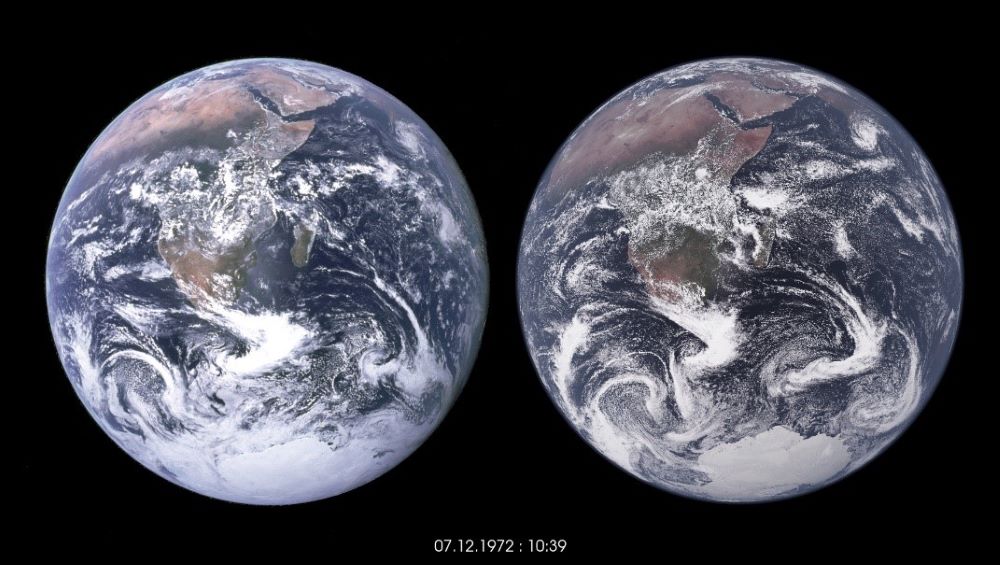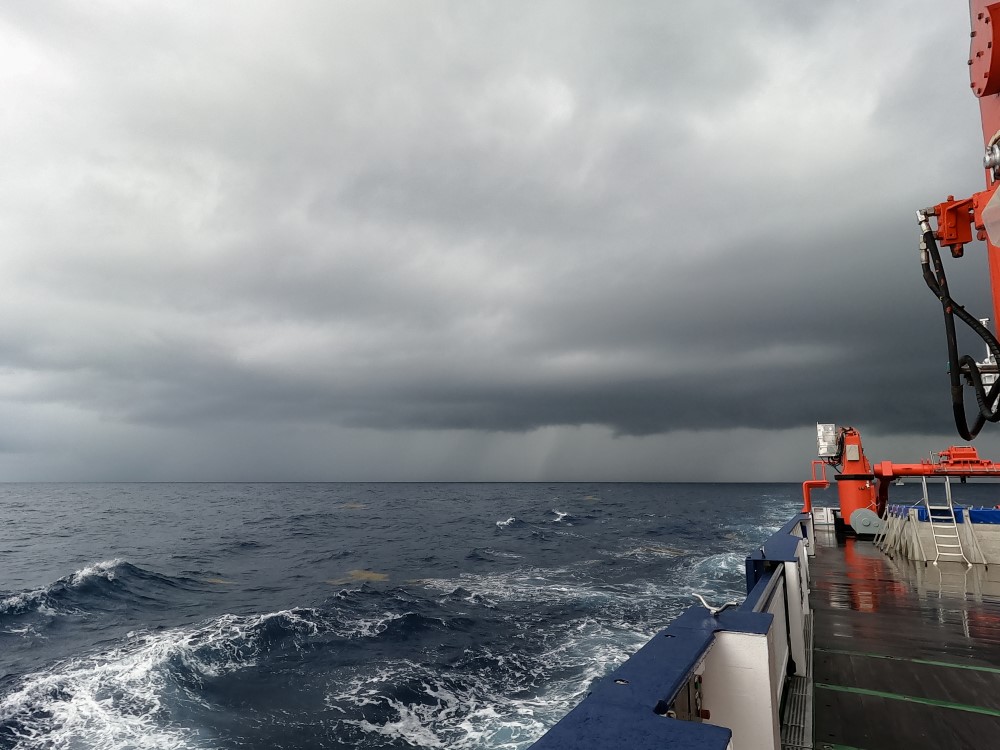February 23, 2024
Cloud Clustering Causes More Extreme Rain
New climate model shows more extreme rainfall in the tropics with increased temperatures
Understanding cloud patterns in our changing climate is essential to making accurate predictions about their impact on society and nature. Scientists at the Institute of Science and Technology Austria (ISTA) and the Max Planck Institute for Meteorology published a new study in the journal Science Advances that uses a high-resolution global climate model to understand how the clustering of clouds and storms impacts rainfall extremes in the tropics. They show that with rising temperatures, the severity of extreme precipitation events increases.

Extreme rainfall is one of the most damaging natural disasters costing human lives and causing billions in damage. Their frequency has been increasing over the last years due to the warming climate. For several decades, scientists have been using computer models of the Earth’s climate to better understand the mechanisms behind these events and to predict future trends. In a new study, now published in the journal Science Advances, a team of researchers from the Institute of Science and Technology Austria (ISTA) and the Max Planck Institute for Meteorology (MPI-M) led by ISTA postdoc Jiawei Bao used a new state-of-the-art climate model to study how cloud and storm clustering impacts extreme rainfall events—specifically in the tropics—in more detail than has been possible before.

“This new type of model with a much finer resolution showed that, with a warmer climate, extreme rainfall events in the tropics increase in severity more than was expected from theory due to clouds being more clustered,” Bao, who originally started this project during his previous postdoc position at the MPI-M, explains. “We can see that when clouds are more clustered, it rains for a longer time, so the total amount of rainfall increases. We also found that more extreme rain over high-precipitation areas happens at the cost of expansion of dry areas—a further shift to extreme weather patterns. This is due to how clouds and storms cluster together, which we could now simulate with this new climate model.” This new model, first proposed in 2019, simulates the climate with a much higher resolution than previous ones. Previous models could not factor in clouds and storms in as much detail, therefore missing much of the complex dynamics of air movement that create clouds and make them congregate to form more intense storms.
While the model simulates the whole world at once, the scientists focused their analysis on the area of the tropics around the equator. They did this because cloud and storm formation there works differently than in other latitudes. Caroline Muller, Assistant Professor at ISTA, adds, “Previous models have hinted at the influence of clouds clustering on precipitation extremes but could not provide the necessary data. In collaboration with our colleagues Bjorn Stevens and Lukas Kluft from the Max Planck Institute for Meteorology, our findings add to the growing body of evidence showing that cloud formation on a smaller scale has a crucial impact on the outcomes of climate change.”

Collaborative models
Researchers all over the world are collaborating on creating more detailed and realistic models of the world’s climate to understand the effects of climate change. Climate models divide the Earth’s atmosphere into three-dimensional chunks, each with its own data about temperature, pressure, humidity, and many more physical properties. They then employ physical equations to simulate how these chunks interact and change over time to create a representation of the real world. As computing power and storage are not unlimited, these models have to introduce simplifications and scientist continuously work to making them more accurate.
Older generations of climate models use chunks of around 100 kilometers in horizontal length, which still result in tens to hundreds of thousands of them covering the whole globe. Advances in algorithms and supercomputers enabled scientists to increase the resolution of the models more and more. “We used a climate model developed at MPI-M and analyzed the data hosted at the German Climate Computing Center in Hamburg with a resolution of just five kilometers which was very computationally expensive,” Bao adds. “All climate research is an immense collaborative effort by hundreds of people who want to contribute to our understanding of the world and our impact on it.”

Bao, who first got interested in climate research during his PhD at the University of New South Wales, Australia, and who now works as an IST-BRIDGE postdoctoral fellow at ISTA, wants to continue his work on extreme precipitation events to find more evidence for their causes and impacts using additional models.
Caroline Muller, who first studied mathematics and then found her passion for research questions with more real-world impact, and her research group use climate models to study air convection and the formation of clouds and storms at different scales—up to tropical cyclones—to better understand their causes and the impacts of climate change on society and nature.
Publication:
J. Bao, B. Stevens, L. Kluft, C. Muller. 2024. Intensification of daily tropical precipitation extremes from more organized convection. Science Advances. DOI: 10.1126/sciadv.adj6801
Funding information:
This work was supported by the Max Planck Gesellschaft (MPG), German Climate Computing Centre (DKRZ), the Jülich Supercomputing Centre (JSC), the EU’s Horizon 2020 programme (grant agreement no. 101003470) through the NextGEMS project, the MONSOON-2.0 project (grant agreement no. 01LP1927A) which is supported by the German Federal Ministry of Education and Research (BMBF). Funding was provided by the EU’s Horizon 2020 programme (Marie Skłodowska-Curie grant, grant agreement no. 101034413; grant agreement no. 101003470; Project CLUSTER, grant agreement no. 805041).



